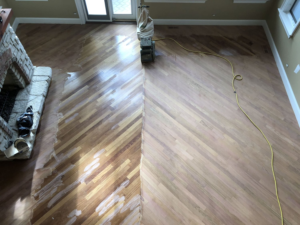Pianos are beautiful instruments that inspire creativity and produce beautiful music, but they are also heavy, awkwardly shaped, and difficult to maneuver. Because of this, it’s important to do your research before moving a piano on your own. Here are a few things to keep in mind. For more information, click the Piano Movers Colorado Springs to learn more.
The type of vehicle you use will have a huge impact on how easy or hard the move is. You will want to choose a vehicle that is large enough to fit the piano and has a loading height that matches the origin and destination locations. A truck with a loading ramp will be a necessity, as most people will have to roll the piano up onto the deck of the truck at both ends of the journey.

Piano Movers in Los Angeles use a variety of different tools depending on the severity of the move. The right tools can help you and your helpers be more efficient and safe during the process.
One of the most important tools for moving a piano is a dolly. Dollies are a great way to reduce the amount of lifting and help you navigate obstacles like stairs or stairwells. You can purchase a dolly from most piano retailers, or you can rent them from truck rental companies like U-Haul or Budget. Using a dolly will also help you avoid damaging your furniture and floors by lifting it off them with your back, arms, and legs.
Another helpful tool for moving a piano is plywood planks. These are used to create a ramp when moving the piano up or down a staircase. Using plywood planks will prevent the piano from scraping against the staircase and potentially damaging it. You can also buy or rent a ramp from most furniture or piano stores.
Lastly, it’s important to measure all the spaces in your house that you will need to navigate during the move, including doorways and hallways. This will ensure that your piano will be able to fit through all the necessary spaces without any issues. Additionally, make sure to clear all the pathways during the move so that there are no tripping hazards or furniture blocking the way. It’s also a good idea to wait to tune your piano after the move so that it can acclimate to its new environment.
Ask for Help
A piano is a large, heavy instrument that requires the help of several people in order to be safely moved. Trying to move a piano on your own can result in serious injury or damage to the instrument. It can also be dangerous for the movers, which is why you should always hire professional movers to handle the job. Piano movers are trained to move the instruments and have specialized equipment to make the task safe and easy. They are also familiar with the different types of pianos and can help you find the right one for your needs.
In addition to having a team of people available to help you move the piano, you should also plan out the details of the move ahead of time. This can save you a lot of trouble down the road when it comes to finding a truck and equipment that are equipped to handle such a heavy load. You should also carefully measure all doors, hallways, and staircases to ensure that the piano will fit through them.
You should also be prepared for unforeseen circumstances that may arise during the move. This can include anything from a doorway that is too tight to maneuver the piano through to a staircase that is too steep to climb. You should prepare for these situations by packing the truck with extra padding and by having a plan for how to get around any obstacles that may come up.
Pianos are some of the heaviest items in most households, so they are not something that you can just throw into the back of your car and take off. You will need to rent a truck or buy a van that is specially designed for moving such a large and heavy item. You will also need to have special moving pads and straps that are made to hold the piano securely.
While it is tempting to ask friends and family members to help you lift the piano, this is not a good idea. This type of move requires a team of four people and special equipment to be done properly. In addition, it is a very strenuous and time-consuming task that can lead to injuries if someone becomes tired or exhausted.
Prepare for the Move
The most important step of moving a piano is getting the proper supplies and enlisting the right helpers. A few good movers with the proper tools can make the move much easier and safer. Some items that are needed include:
Dolly: A specialized dolly allows for a more controlled movement, minimizing the chances of damage. It also makes maneuvering through tight spaces a lot simpler. Ramps: Whether it’s for loading the piano onto the truck or navigating stairs, ramps are an essential part of the piano moving process. They provide a smooth incline, helping to reduce the amount of strain on the movers as well as the piano itself.
Straps: Using straps to secure the piano to the dolly and to the truck is necessary. This prevents the piano from shifting and causing damage during transport. Ratchet straps are the preferred type of strap for this purpose as they can be tightened and loosened easily. Work gloves: One set of work gloves per mover will ensure that the movers’ hands are protected while working with the piano.
Initial Assessment: Before the actual move begins, the movers will first assess the situation and determine what kind of piano is being moved and the pathway to its new home. This will allow them to create a plan and map out the steps involved, identifying any areas that might be difficult to maneuver. It’s also important to remove any furniture or other items that might be in the way and clear the area.
Dismantling the Legs & Pedals: Once a plan is in place, it’s time to begin dismantling the legs and pedals of the piano. This is a delicate task that requires skill and knowledge, so it’s generally best left to the professionals.
Once the piano is dismantled, it’s time to start the actual move! The movers will load the piano on to the dolly and then into the truck. Once they’ve arrived at the new location, they will reverse the process. This includes lowering the lid, securing it, and then rolling the piano off of the dolly onto the ramp and into the truck. After the piano has been successfully loaded into its new space, it’s a good idea to wait a few weeks before tuning it, so that it can adjust to its new environment.








